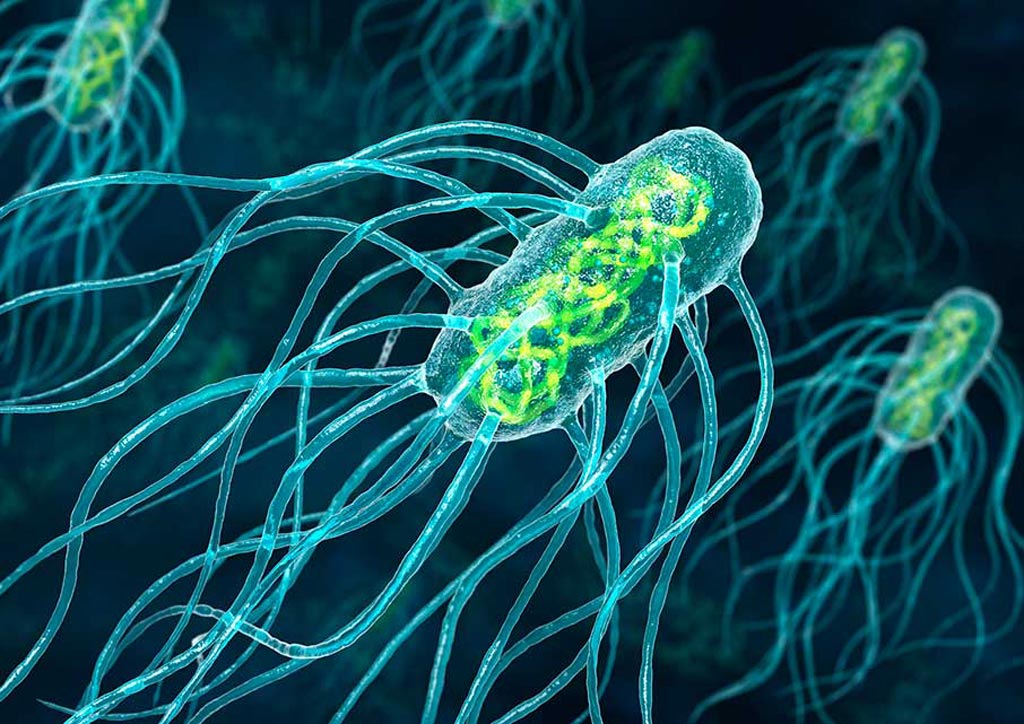Typhoid Fever Victims Present Unique Metabolomic Profile
By LabMedica International staff writers
Posted on 15 May 2017
A panel of metabolic markers distinguishes patients with typhoid fever from others suffering from non-typhoid tropical fevers such as malaria.Posted on 15 May 2017
Typhoid fever (or just typhoid) is caused by the bacterium Salmonella Typhi (Salmonella enterica serotype Typhi). The disease is usually diagnosed by blood culture, a method that lacks sensitivity, portability, and speed.

Image: Salmonella Typhi, the bacterium responsible for Typhoid fever (Photo courtesy of Animated Healthcare).
Investigators at the University of Oxford had previously shown that specific metabolomic profiles could be detected in the blood of typhoid patients from Nepal. Metabolomics is the study of chemical processes involving metabolites, while the metabolome represents the collection of all metabolites in a biological cell, tissue, organ, or organism that are the end products of cellular processes.
In the current study, the investigators performed mass spectrometry on plasma from Bangladeshi and Senegalese patients with culture confirmed typhoid fever, clinically suspected typhoid, and other febrile diseases including malaria.
After applying supervised pattern recognition modeling, the investigators found that they could significantly distinguish metabolite profiles in plasma from the culture confirmed typhoid patients. After comparing the direction of change and degree of multivariate significance, they identified 24 metabolites that were consistently up- or down regulated in a further Bangladeshi/Senegalese validation cohort, and the Nepali cohort from their previous work. The model had excellent predictive power for distinguishing between culture-positive typhoid patients and patients with other types of tropical disease. In addition, the metabolite panel identified five of nine blood-test-negative samples that were actually typhoid positive and three of five patients who were suspected of typhoid from their symptoms.
"We wanted to assess if metabolomics could accurately diagnose typhoid in patients from different regions with a wider range of tropical diseases," said senior author Dr. Stephen Baker, professor of molecular microbiology at Oxford University's clinical research unit, Vietnam. "We thought that this approach would more closely reflect the real situation where patients with fever-inducing diseases present with non-specific symptoms. Our results demonstrated a metabolite panel that can distinguish typhoid from other fever-inducing diseases, providing a new approach for typhoid diagnostics. The next challenges are to corroborate these metabolites in larger patient numbers and try and incorporate them into simple diagnostic test formats. This approach could be potentially expanded into other tropical diseases, eventually allowing for more accurate diagnosis and more effective treatment, and hopefully reducing the use of unnecessary antimicrobials."
The study was published in the May 9, 2017, online edition of the journal eLife.














